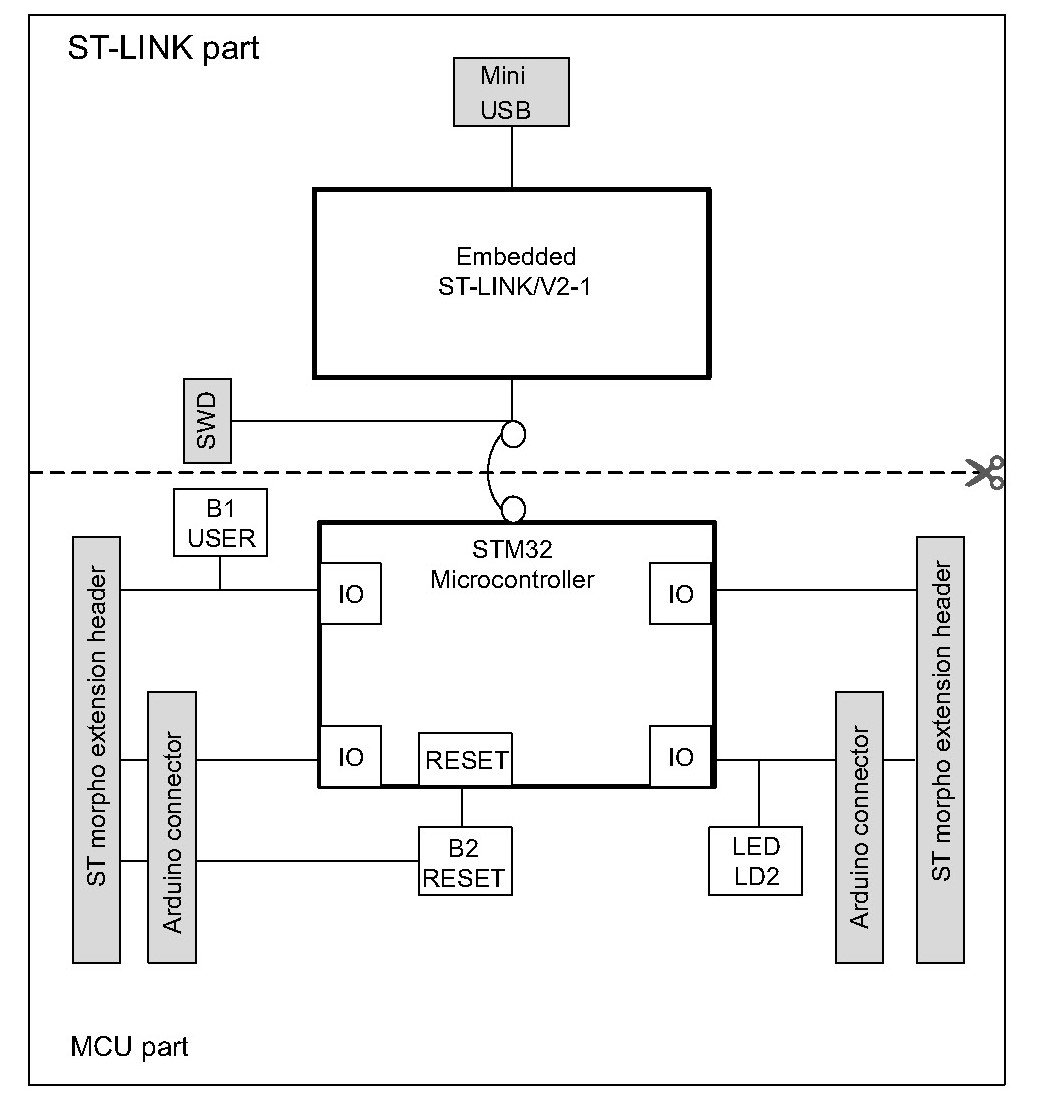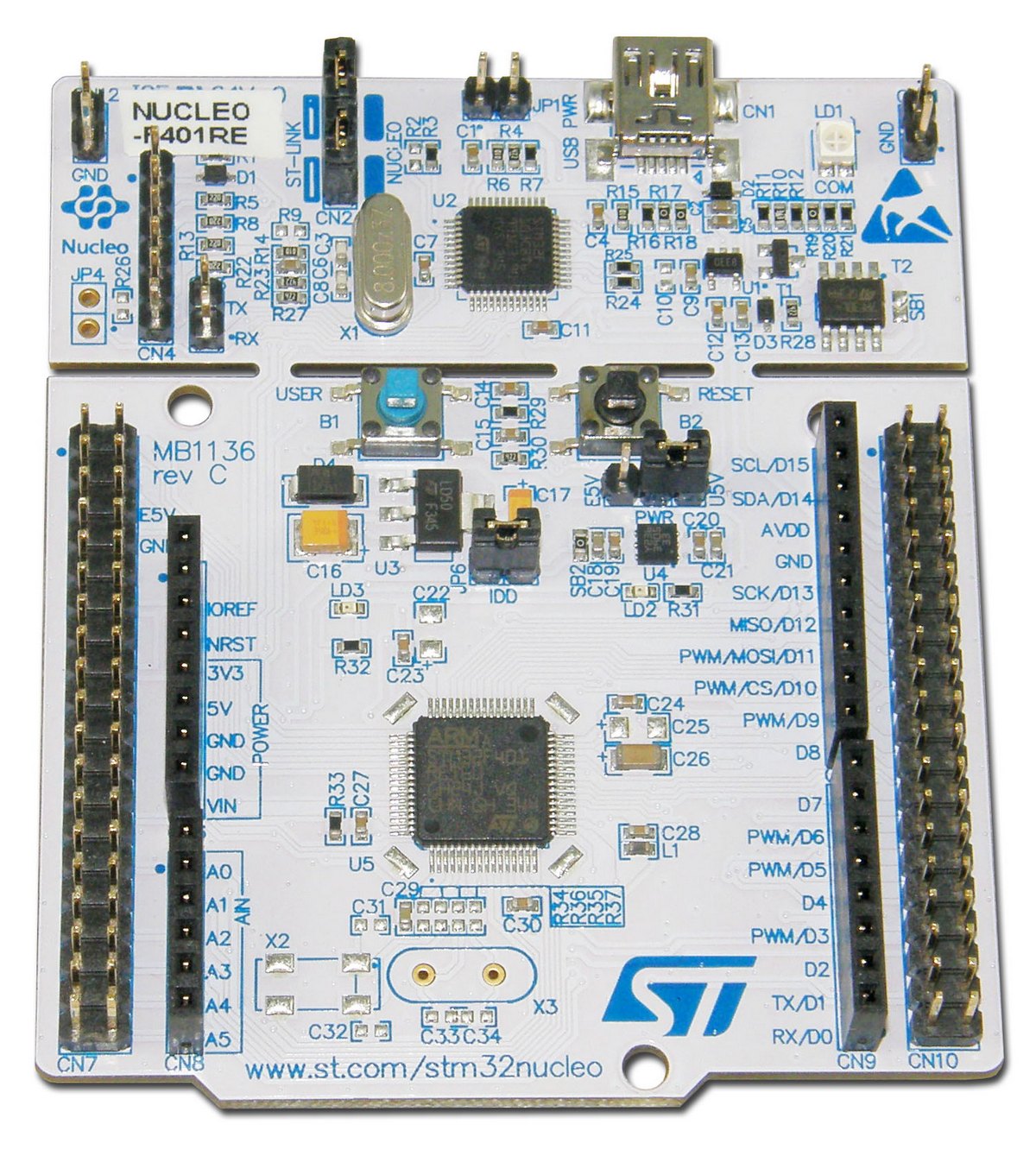
Thanks, I figured as much, having some prior experience with microcontrollers and JTAG.
NUCLEO F401RE SCHEMATIC SERIAL
You'll need to connect Tx from the USB-serial adapter to Rx on the F401, Rx on the USB serial adpater to Tx on the F401, and GND from the USB-serial adapter to GND on the F401.

If you're going to use UART-6 then you need to connect a USB-to-serial adapter to the appropriate pins on the board and also use the appropriate /dev/ttyACMx for the usb-to-serial adapter. Note: If you're going to use UART-2 then you need to quit whatever program you were using for the REPL before running your host program. now back to co-routine mutlitasking for a GPIO cap-sense to LED-brightness visual-theremin! I changed the device program back to UART 2, and prepended a 'print' on the client-side and voila! You also don't print anything in your host program - you just read the data over and over in an infinite loop.ĭ'OH! That was the key here. Yeah I was trying all sorts of things, with ser.read() and sending different strings from the MCU side. Now your host program calls readline, which waits for a newline, and since you don't send any, it will wait forever. Strangely it seems like pyb either carries over from boot.py, or it just magically is there, as I find pyb calls to work from the non-boot.py scripts that boot.py calls. I also uncommented he import of pyb which you'll need since you call pyb.delay: That's why I tried both USB_VCP, thinking well, I guess maybe that sends JTAG-encapsulated commands when you call write on it, while the UART would have its RS232-style protocol wrapping the data.

Yeah that is what I figured when I was going through the schematic from STM, and also suspected it from eyeing the traces on the board for PA2 and PA3 (they looked unconnected, as in the schematic, and by default being routed to the ST-LINK TDI and TDO pins) If looking for a different ST Micro datasheet, stm32 datasheet, or nucleo-f401re schematic, please view our comprehensive library of Arrow Electronics datasheets.It would be useful to describe what you're connecting to where.īy default, UART-2 is connected to he stlink processor, which will be advertised as /dev/ttyACM0 when plugging in the NUCLEO board NUCLEO-F401RE STMicroelectronics Datasheetĭatasheet Snippet: The Arduino™ Uno V3 connectivity support and the ST morpho headers allow the easy expansion of the functionality of the STM32 Nucleo open development platform with a wide choice of specialized shields. Arrow Electronics is an official source for ST Micro datasheets, schematics, and other product documentation. Sometimes referred to as ST Micro and ST Microelectronics, products include STMicroelectronics microcontrollers and STMicroelectronics development boards.

Certified STMicroelectronics DistributorĪrrow Electronics is a certified ST Microelectronics distributor, offering a variety of products. Arrow Electronics carries a wide variety of products within these categories.

The NUCLEO-F401RE is associated with the following product categories: microcontroller, development boards, stm32 nucleo, nucleo board, stm32 board, stm32 nucleo board. This product is part of the STM32 Nucleo family of products. NUCLEO-F401RE by STMicroelectronics Product Video Product Aliases for NUCLEO-F401REĬommon product aliases for the NUCLEO-F401RE include Nucleo f401re, and STmicro Nucleo.
NUCLEO F401RE SCHEMATIC CODE
To get started prototyping, ST even provides demonstration source code and associated documentation at st.com/stm32nucleo. The STM32 Nucleo board integrates the ST-LINK/V2 debugger/programmer and does not a separate probe. This configuration of the STM32 is based on the high-performance ARM Cortex-M4 32bit RISC core operating at up to 84MHz and features Arduino UNO pin compatibility to enable shield and other peripheral attachments to the STM32 I/Os. STMicroelectronics NUCLEO-F401RE Product DescriptionĪs an affordable and flexible way of prototyping with the STM32 family of microcontrollers, the NUCLEO-F401RE configuration from STMicroelectronics is designed to support prototyping of their ARM Cortex-M4 STM32F401RET6 MCU.


 0 kommentar(er)
0 kommentar(er)
